That Time a Bunch of Space Hippos Crashed Coachella (Photos)
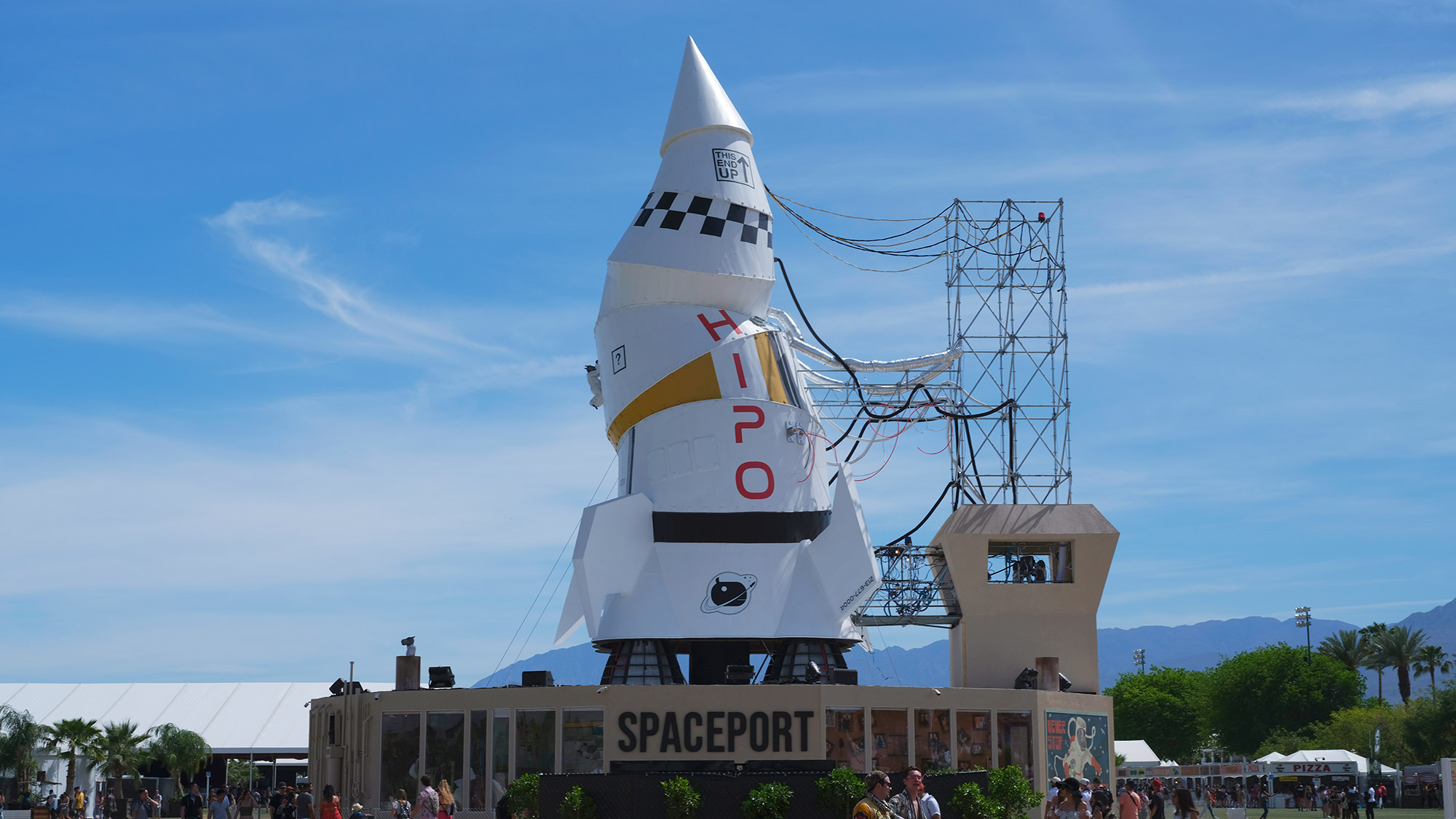
We all know that interstellar flights, far away from the spectacular sights of planets and moons, need a little entertainment. Enter: flying hippos. The exhibit was (appropriately) called Hazardus Interstellar Perfessional Operations (or H.i.P.O.). The rocket, launch pad and hippos were the centerpiece exhibit of the Coachella Valley Music and Arts Festival, which ran over two weekends: April 12 to 14, and April 19 to 21.
This spectacular "interstellar" exhibit took four months to assemble: The hippo-notizing performance art took place at an 80-foot (25-foot) tall rocket that stands just a little smaller than the real Mercury-Atlas launcher that hefted the first NASA astronauts into orbit in the 1960s.
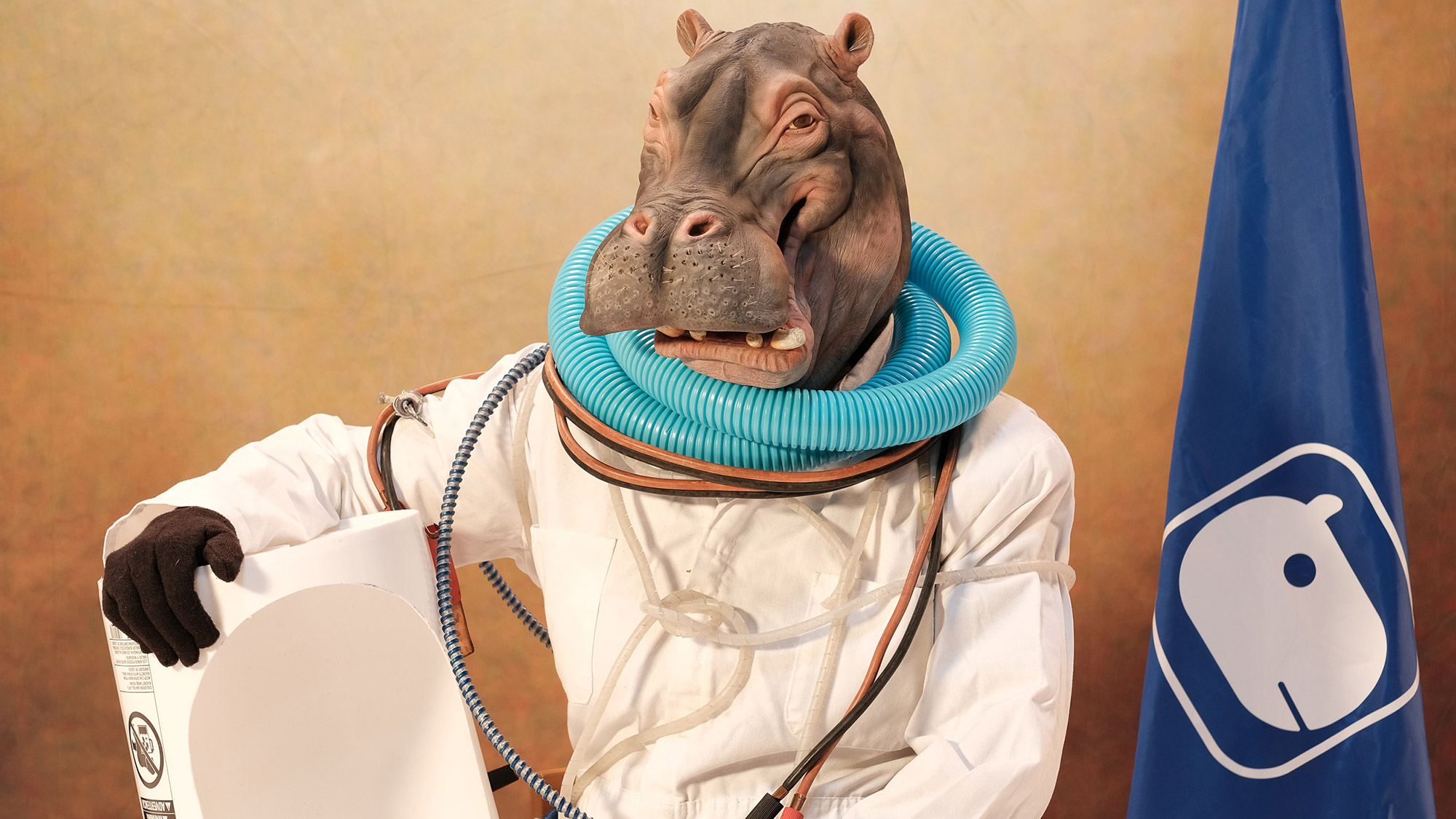
One of the first "hippos" in space poses for the usual heroic astronaut photo, beside the hippo-adorned flag. The exhibit required 210 cast and crew, many of them wearing hippo costumes. Although from the looks of this photo, who knows — maybe a real hippo or two snuck in there.
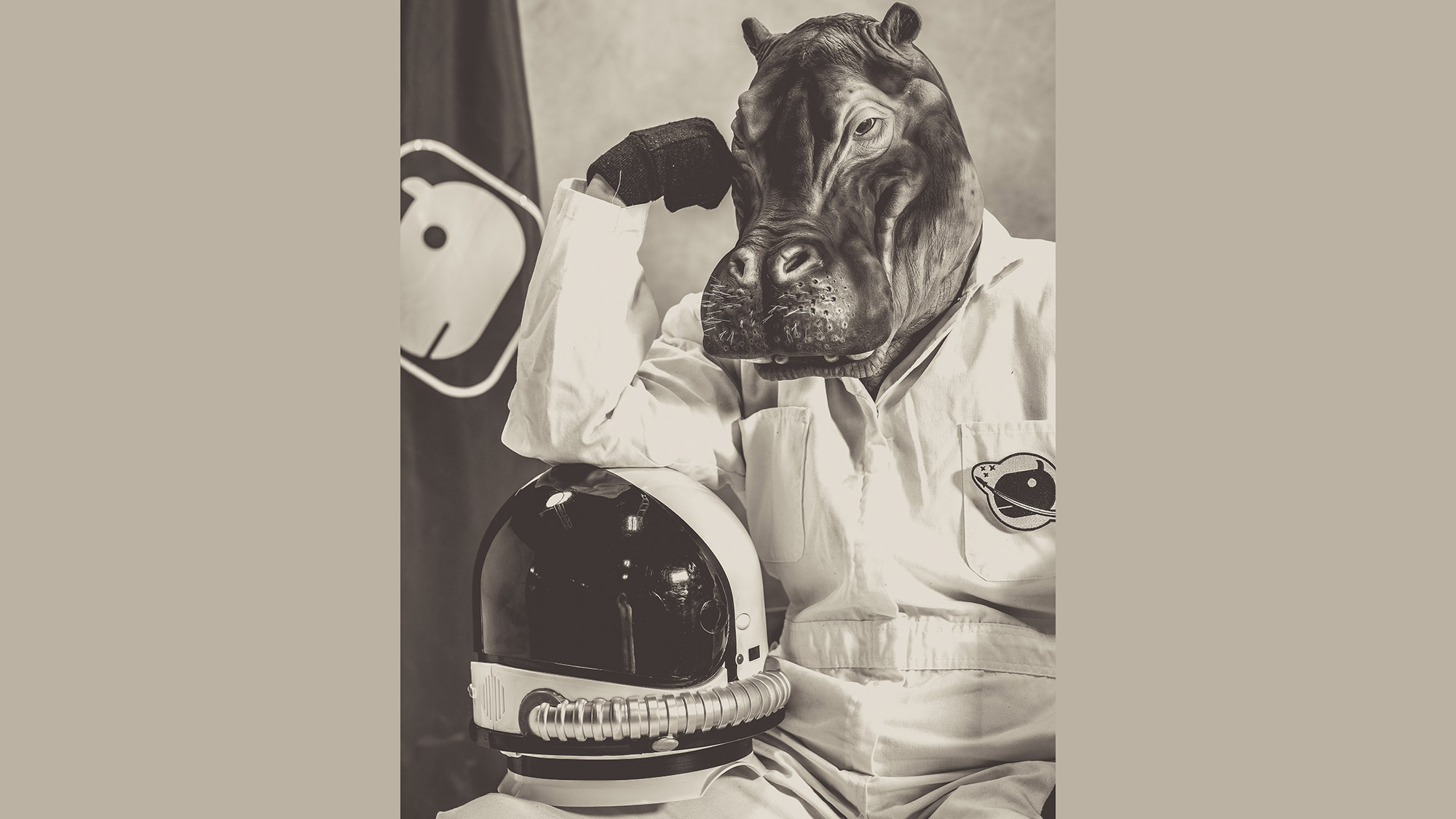
We're not sure if hippo anatomy requires any spacesuit alterations. NASA is hard at work on spacesuits for lunar astronauts, since the agency plans to land people on the moon in 2024, so maybe now is a good time to ask the designers about possibilities for hippo recruitment, too.
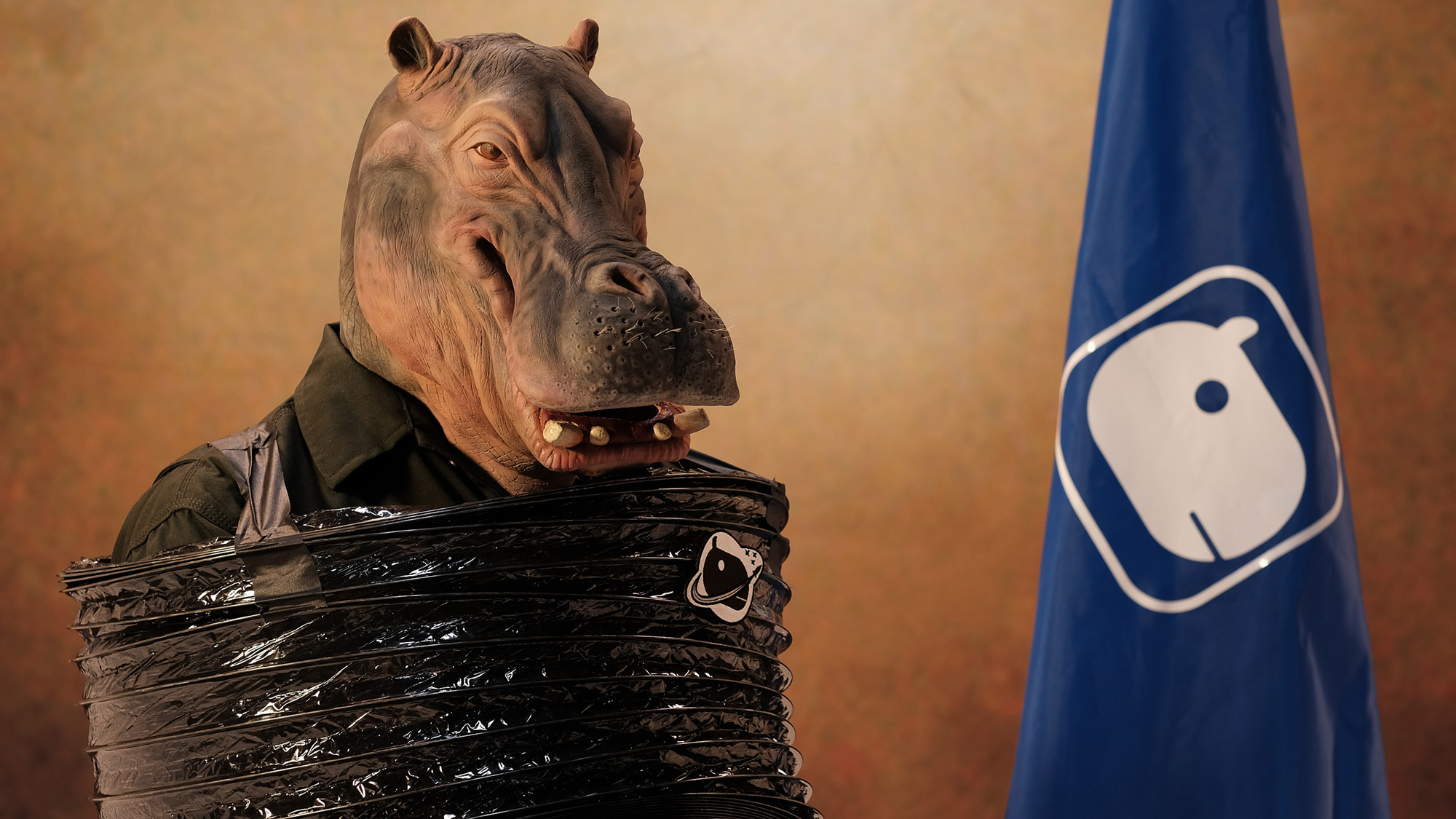
It's kind of unclear what is going on in this photo. A hippo prisoner? Preparation for a medical procedure? All we know is that astronauts on interstellar missions may have to deal with their crewmembers breaking the law, or becoming sick, so that's a part of the necessary training that far-flying astronauts must undergo to keep the mission going under all circumstances.
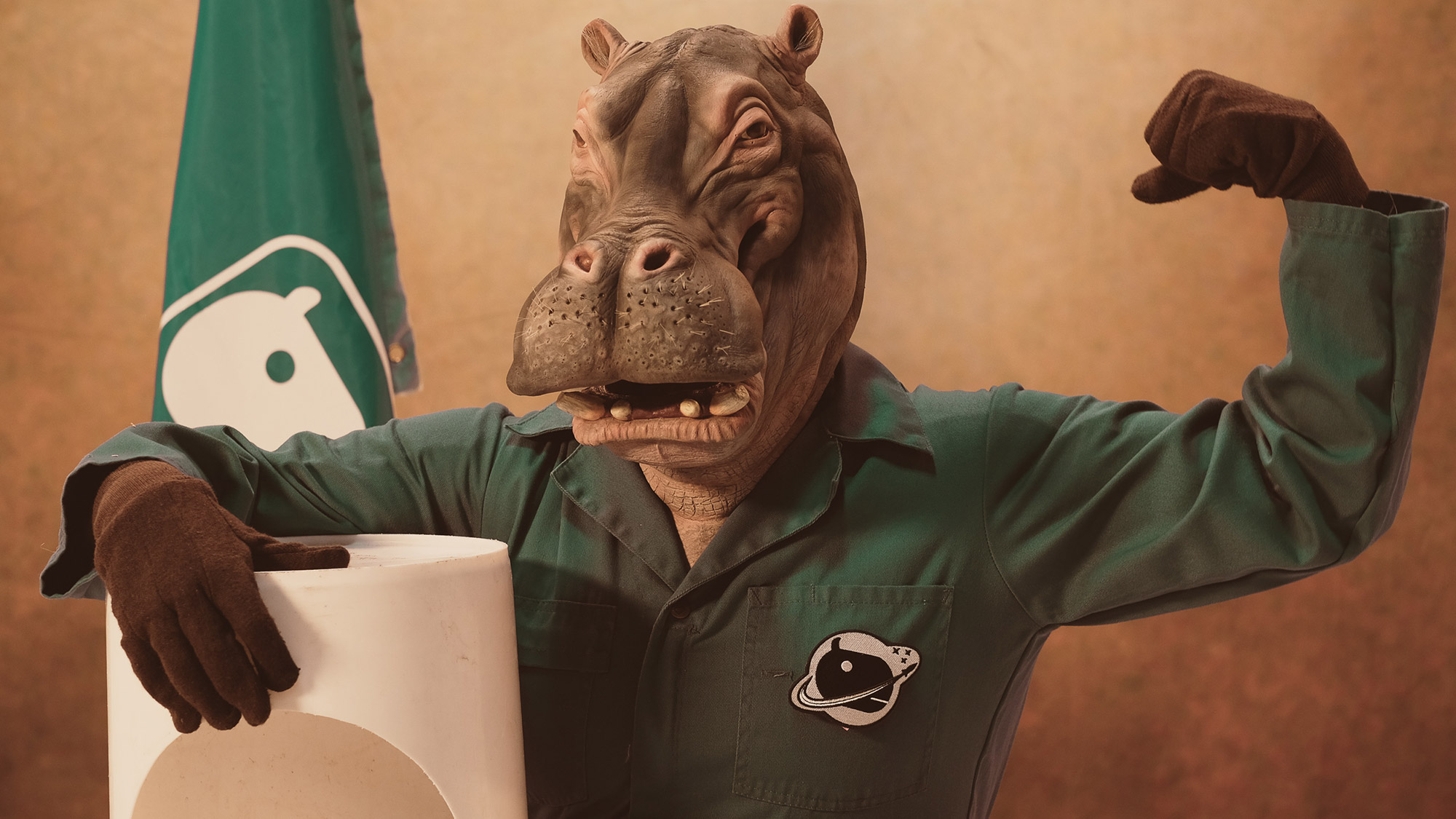
We bet this hippo could beat any human astronaut in a wrestling match, so if command goes to pure strength, we'll let the hippos have it. Then again, the models of science fiction series such as "Star Trek" and "Star Wars" show that it is possible to have interspecies crews coexisting peacefully and exploring the universe together, so perhaps no wrestling matches are needed. Hippos are smart creatures, so we'd be glad to work directly with them.
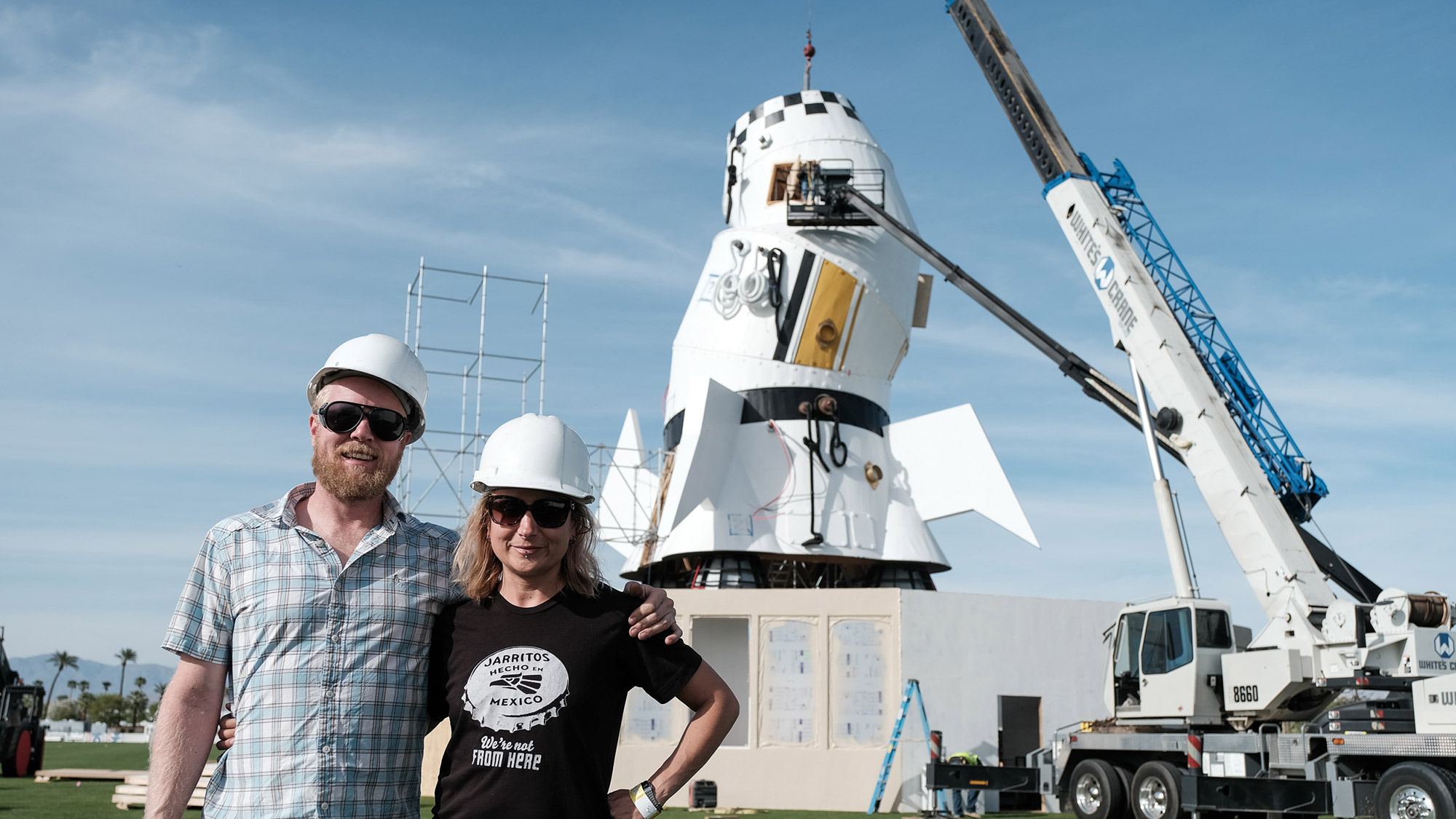
"The entire structure acts as a medley of different artistic mediums," Dedo Vabo, the absurdist artists and self-described "professional weirdos" behind the exhibit, wrote on the website describing H.i.P.O. "Robotics and animatronics, multimedia elements, animations, smoke [effects], mechanical gags, puppetry, mask making and lighting [effects] are all mashed together into one massive performance art piece that defies explanation."
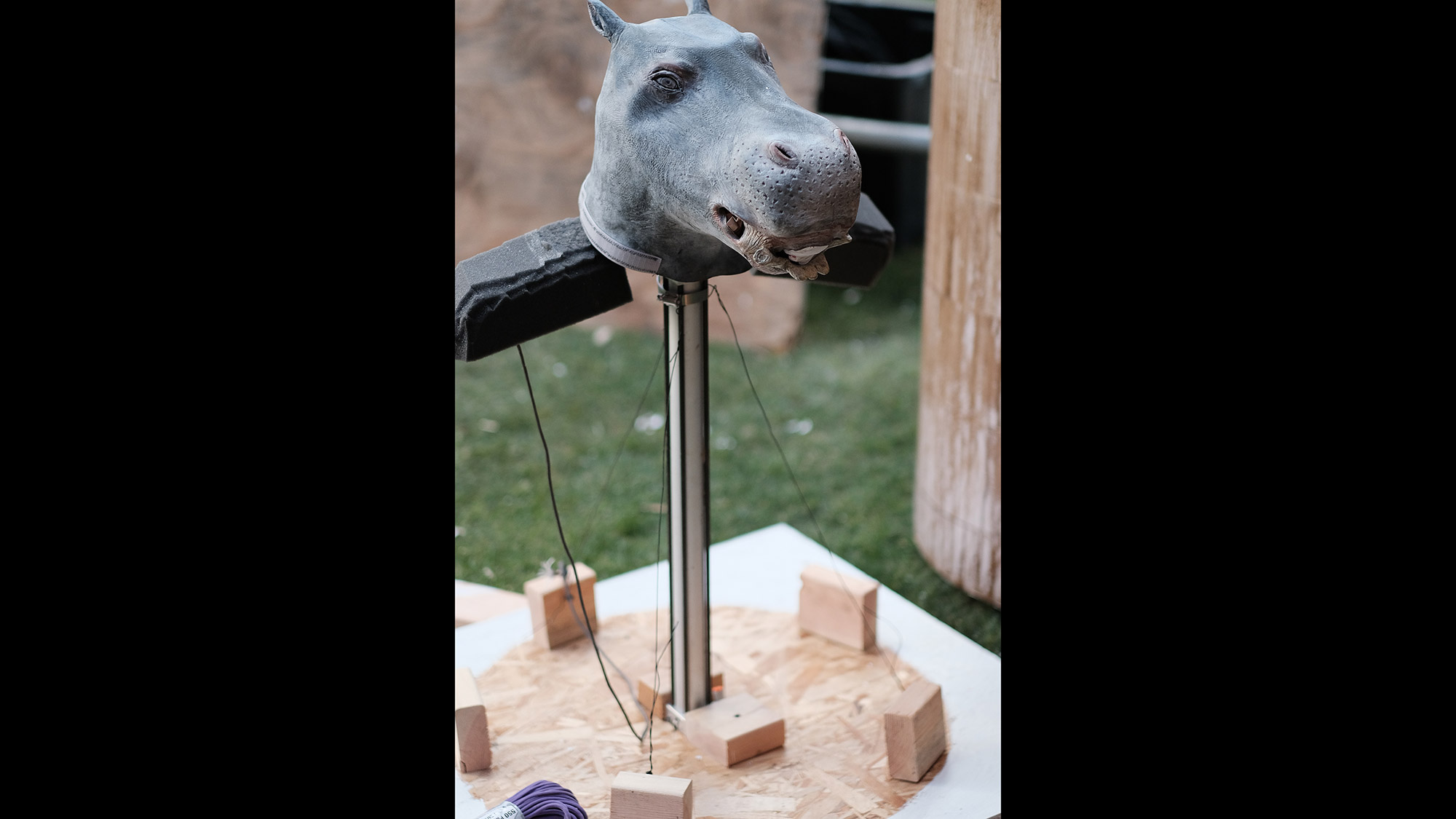
A detached hippo face shows some of the exquisite detail that went into the performance. It took nine months to get everything ready for Coachella, with hundreds of people involved in both the construction and the production.
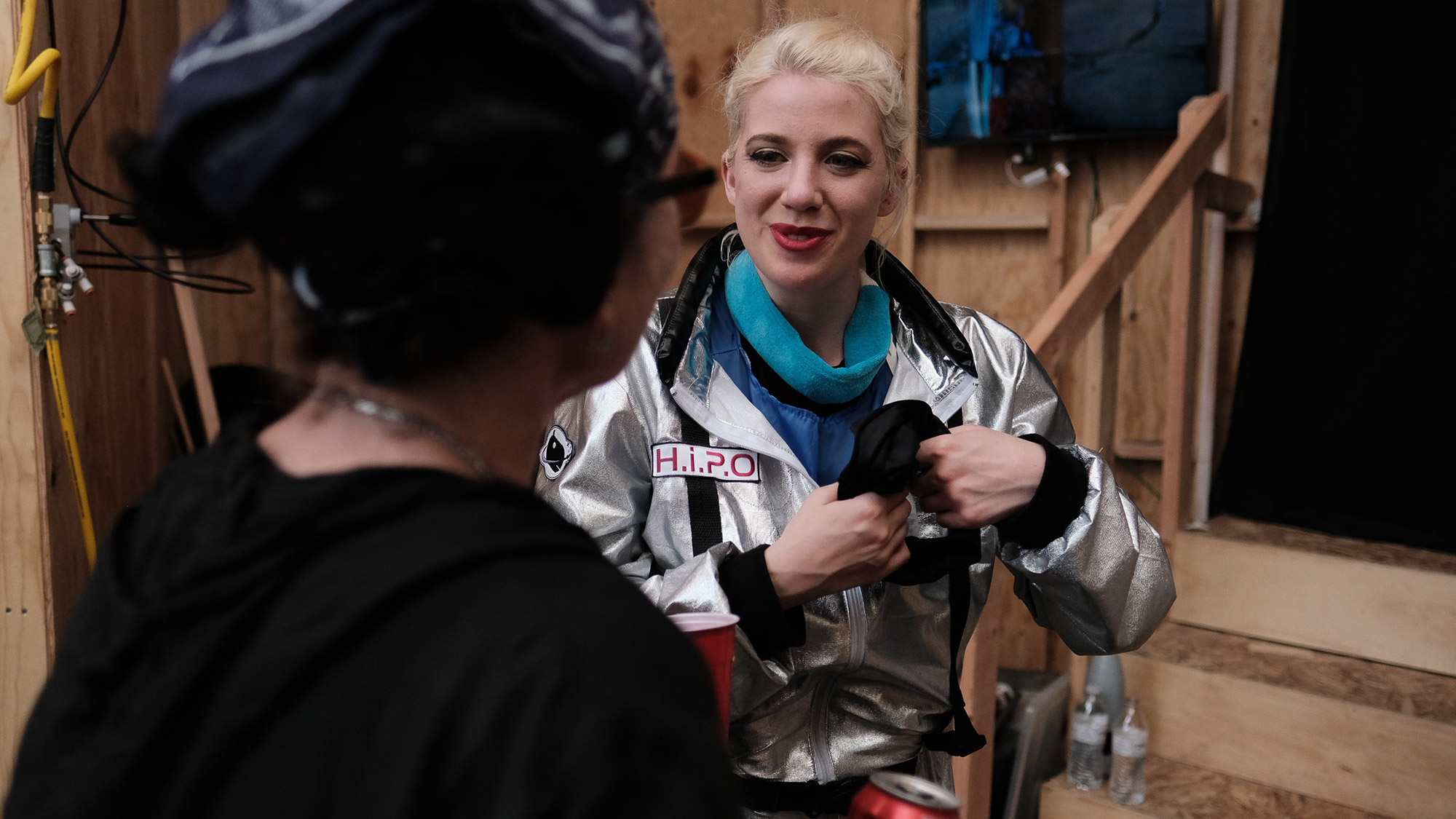
Ah, here's a sign that humans are helping the hippos with interstellar flight! While humans may have more flexible joints, hippos are perfectly optimized for exploring waterworlds (such as the one that was shown in the 2014 movie "Interstellar"). We perfectly complement one another.
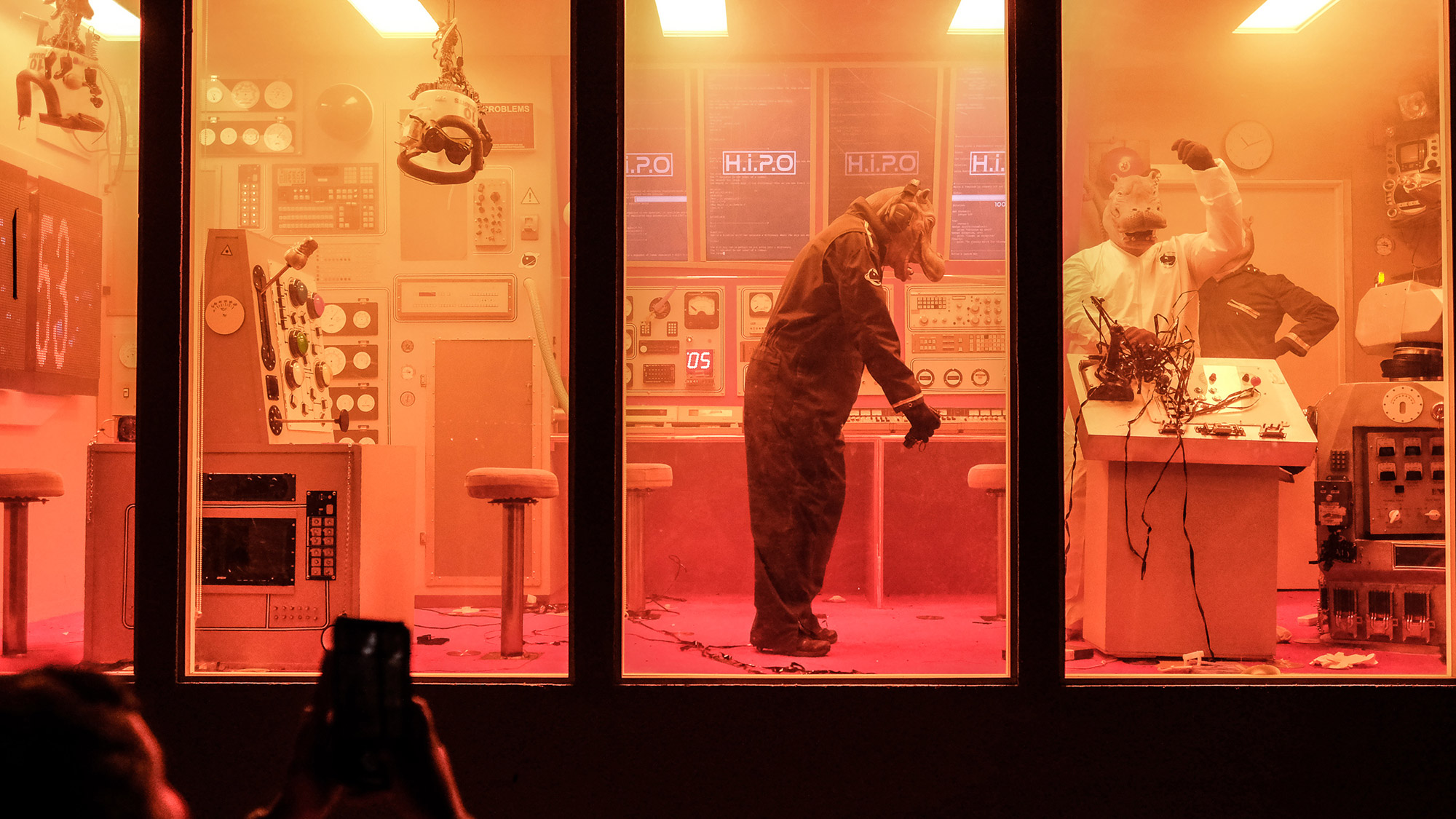
Did Apollo 13 ever think of this scenario when, in the 1995 movie based on the real-life mission, famous mission control director Gene Kranz cried, "Failure is not an option!" It looks like there's a tangle of wires here in Mission Control that only the hippos can resolve. Luckily, they're clearly in heavy discussions here about how to fix it, because that's what mission controllers do — fix things on the spot.
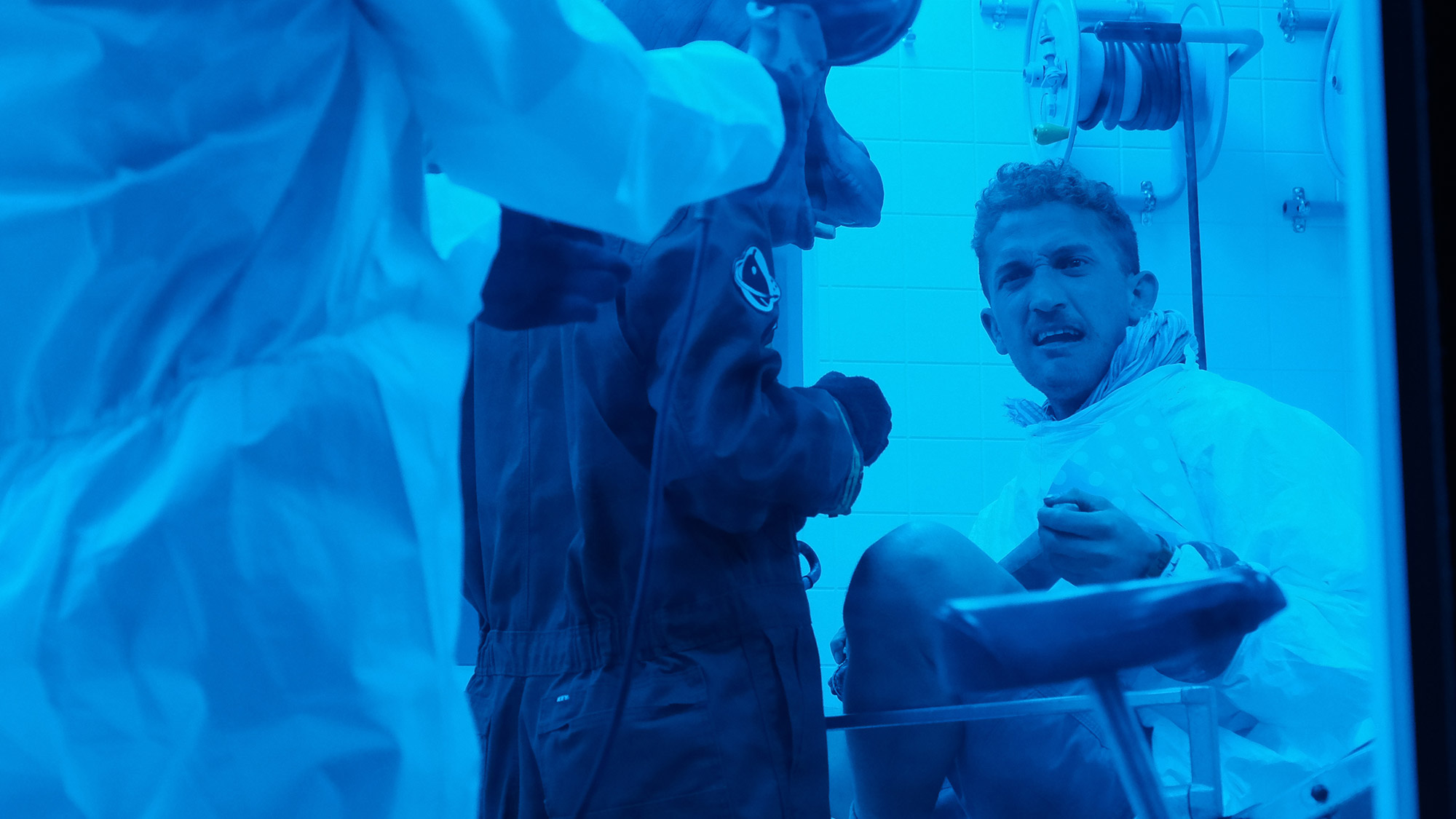
There might be one drawback to interspecies crews — having to deal with unusual smells. Here, one of the humans appears to have a negative reaction to the nearby hippo-scent wafting off a crewmember. Perhaps NASA should invest in some masking perfumes to keep everyone happy.
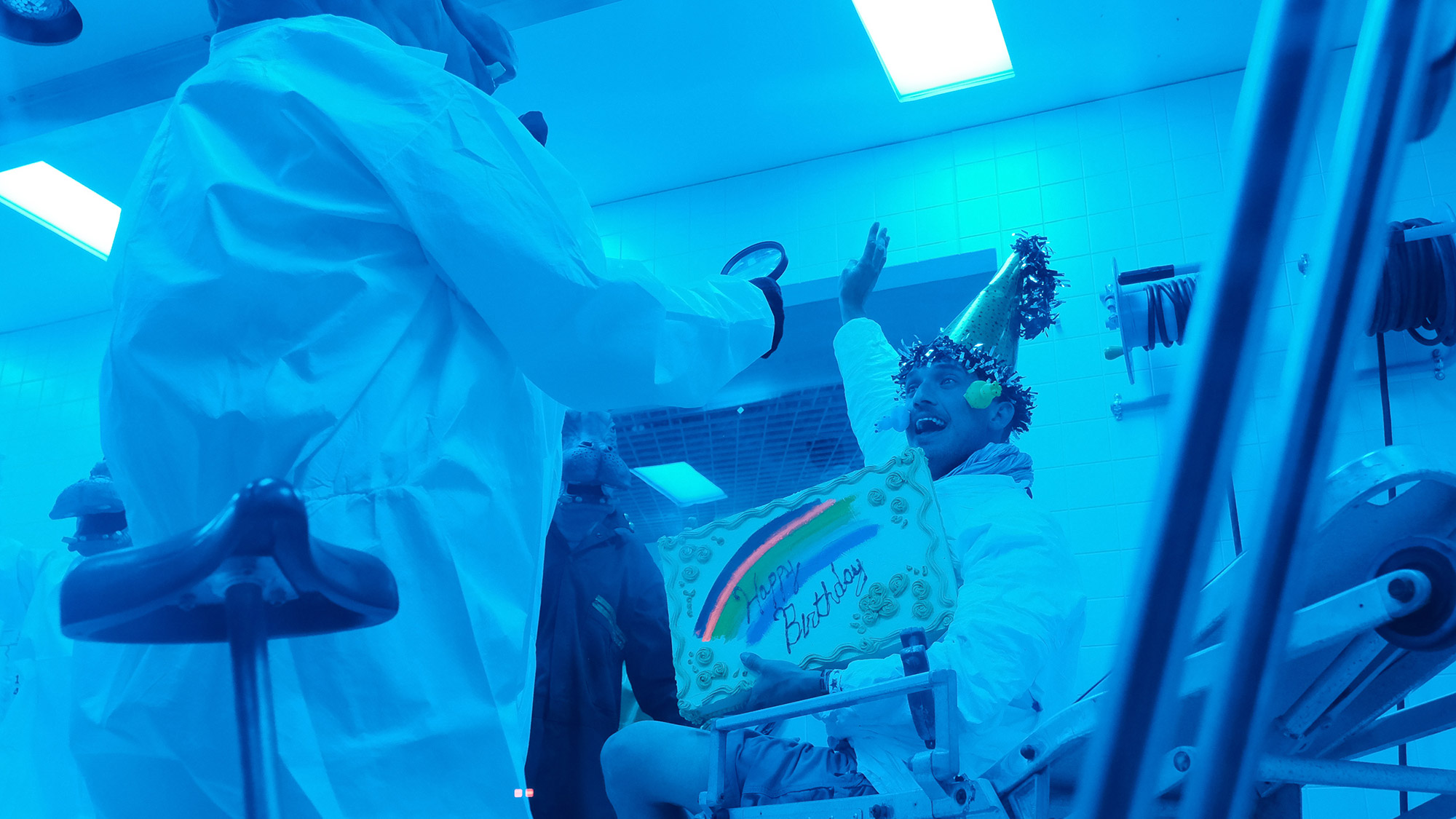
It's very important to celebrate milestones such as birthdays when on a long, interstellar voyage. NASA works hard to keep its astronauts psychologically healthy, encouraging phone calls with families and regular consultations with doctors on the ground. Happy astronauts are productive astronauts, no matter what species they may be.
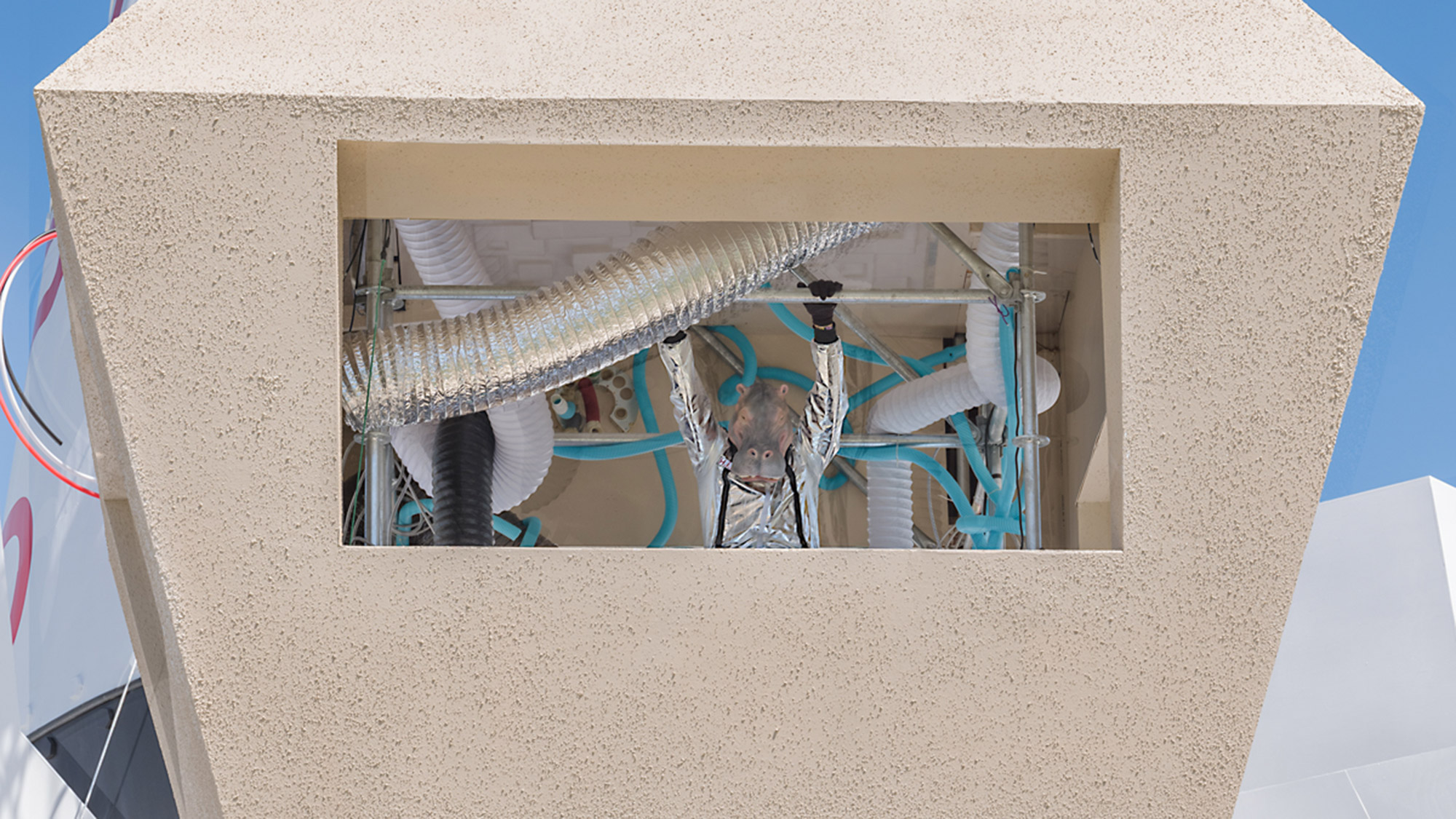
Here, a hippo shows the importance of exercise on a long voyage. Astronauts on the International Space Station typically have an exercise period of 2 hours a day, which includes setting up equipment and activities such as weightlifting or using a treadmill. The routine makes sure bones and muscles are at least somewhat prepared for the rigors of Earth when it's time to go home.
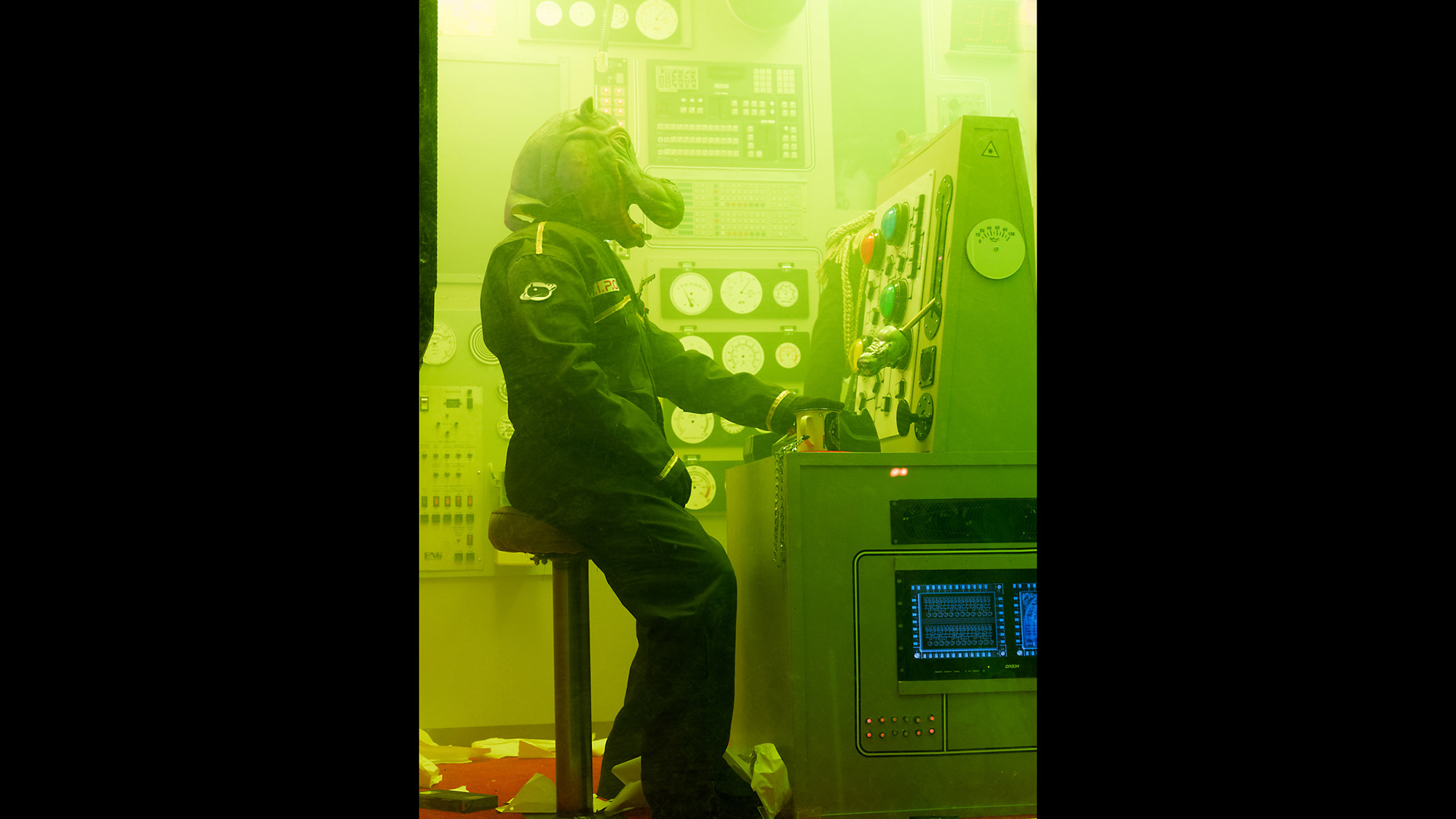
There's a whole field of control design known as "human factors," which (in part) is supposed to make sure that switches are in the right spot and that they are easy to find. It's extremely important to help with the safety of spaceflight. So, now we must ask: What about hippo factors? How do we design Mission Control to accommodate them? Inquiring minds must know.
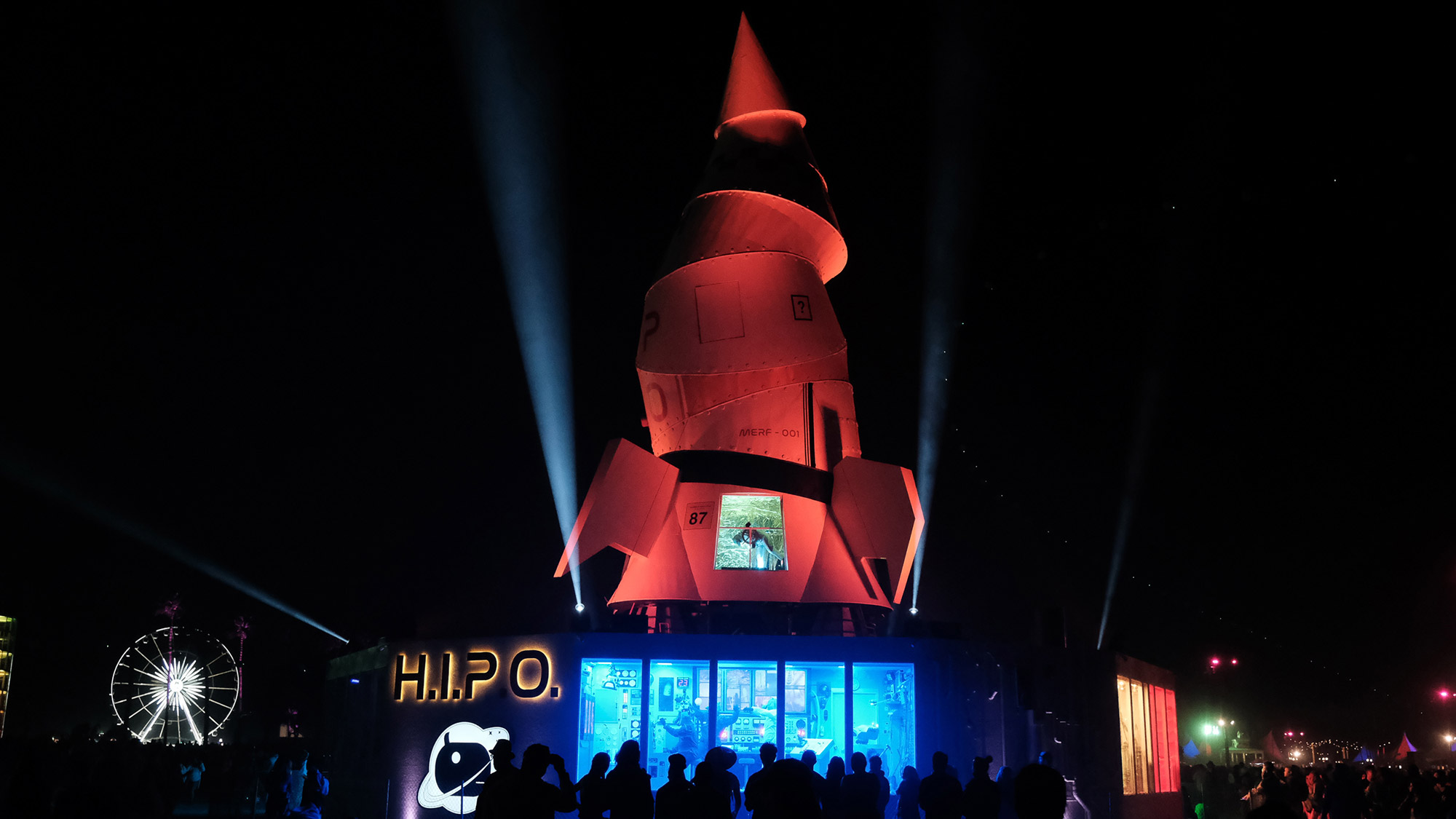
The multi-stage exhibit was a hippodrome of wonders. Visitors first saw the animatronic hippos dangling 70 feet (21 meters) on the exterior of the exhibit, before venturing into an immersive experience that included seven theatrical stages surrounding the structure. A cast and crew of 210 people working 12 hours a day for six days ensured that "at any given angle and at anytime during the event, a performance [could] be seen somewhere on the installation," Dedo Vabo added.
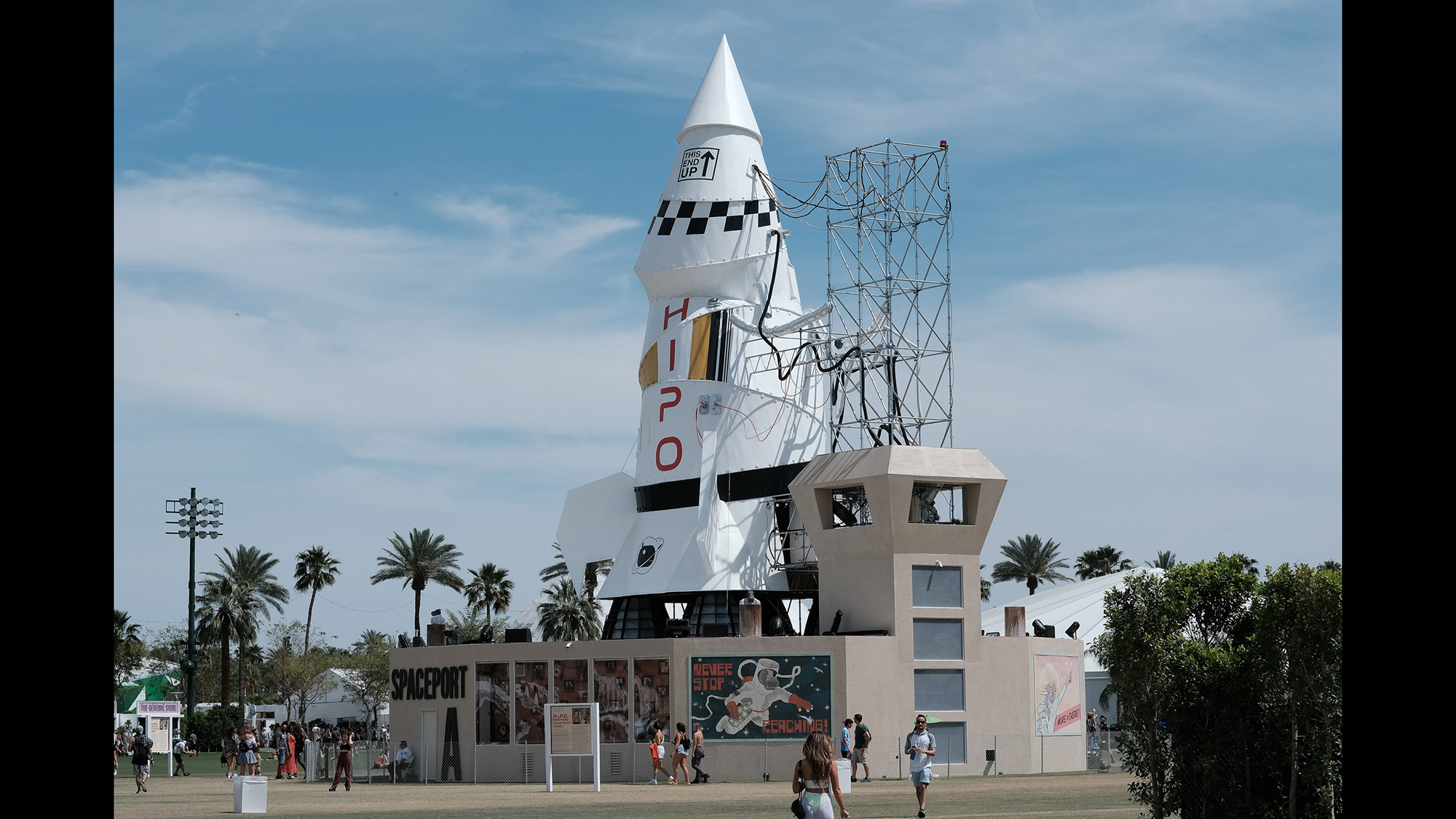
We hope you enjoyed all these pictures, because it unfortunately appears everyone took off on a hippo-bolic orbit. Dedo Vabo lists no future exhibit dates for the hippo birdies, and they are nowhere to be found.

Elizabeth Howell (she/her), Ph.D., was a staff writer in the spaceflight channel between 2022 and 2024 specializing in Canadian space news. She was contributing writer for Space.com for 10 years from 2012 to 2024. Elizabeth's reporting includes multiple exclusives with the White House, leading world coverage about a lost-and-found space tomato on the International Space Station, witnessing five human spaceflight launches on two continents, flying parabolic, working inside a spacesuit, and participating in a simulated Mars mission. Her latest book, "Why Am I Taller?" (ECW Press, 2022) is co-written with astronaut Dave Williams.
